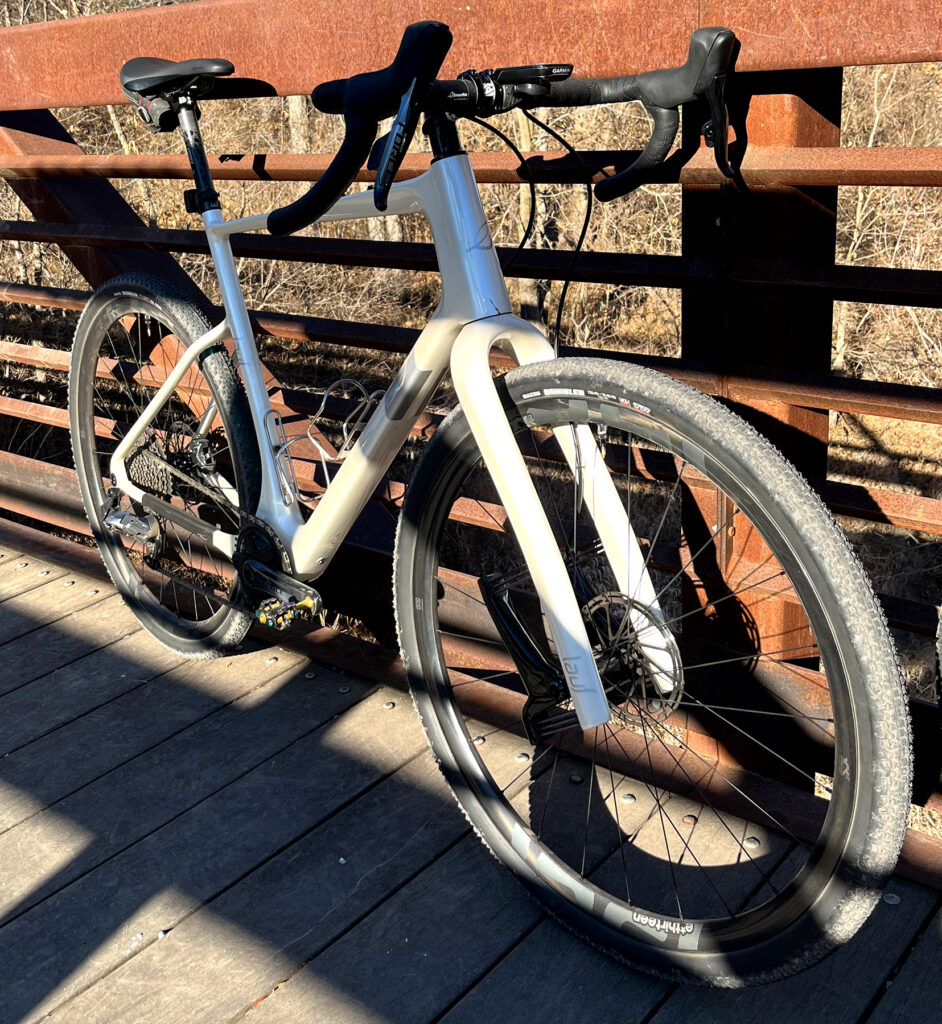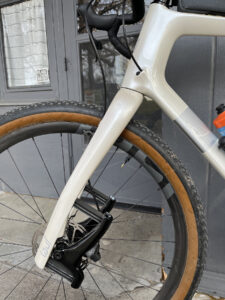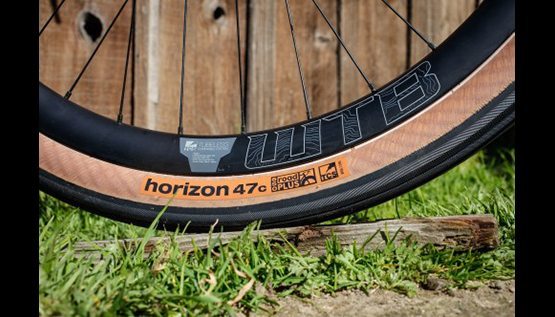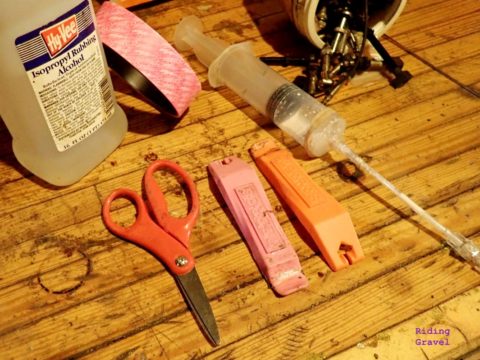
Lauf Seigla Race Wireless: Getting Rolling – by MG
The evolution of the ‘gravel bike’ has been impressive of late, and one of the companies pushing the envelope is Lauf Cycling. First known for their distinctive leaf-spring short travel suspension forks and Icelandic origin, today Lauf is based in the U.S., and their new Seigla is redefining the capabilities of the gravel race bike. I recently received a beautiful ‘glacial white’ Seigla Race Wireless from Lauf for review, and today I’ll give you a first look at this impressive new gravel bike.
A new twist to a familiar favorite
As loyal readers may recall, I reviewed the Seigla’s predecessor, the True Grit, in 2018. Click here to see the full review, but in short, I was very impressed with the bike, particularly relative to the options available at the time. The True Grit had clearance for true 45c tires front and rear in a time when 40c clearance was par for the course, and its 2nd generation Grit SL fork effectively muted bumps at the front of the bike. The handling was top notch too, with a slightly more slack head tube angle and longer front-center, which enabled the use of a shorter stem.
Unfortunately, the sublime comfort the fork provided was always at odds with the firm, efficient rear end of the bike. I eventually found a good balance running a Kinekt suspension seatpost, but ultimately, I always wished for a bit smoother ride from the rear end of the True Grit.
Apparently I wasn’t the only person who felt this way, as Lauf went out of its way to increase rear-end compliance with the Seigla. First, the frame and fork easily fit up to 57c(!) tires (or29x2.25″). Plus, it has dropped seatstays and an offset seat tube designed to more effectively absorbs bumps passed up through the seatstays. The result is a noticeably smoother ride at the rear of the bike.

The offset seat tube design also makes the effective seat tube angle change more dramatically as the saddle is raised. As a result, riders on a larger frame, with less seatpost exposed, will get a steeper effective seat tube angle, while riders on a smaller frame, with more exposed seatpost, will have a more slack effective seat tube angle.
After testing the Large size True Grit, I was keen to try the XL Seigla. Since the frame geometry of the two bikes is very similar, I knew the steeper effective seat tube angle would work well for me, despite Lauf’s recommendation of the XL size for riders over 6’3″ tall (I’m 6’1″).
Seigla specs, options and available models
Each Seigla, regardless of spec, is equipped with the same carbon fiber frame, with a choice of rigid or suspension forks (more on that in a bit). Every Seigla also features Lauf’s Smoothie carbon handlebar, which is designed to reduce vibrations that reach your hands, with a shape that’s ideal for gravel.
The Seigla Race Wireless we have in for review is second-tier spec in Lauf’s four model Seigla line. As such, it’s very nicely equipped, with SRAM’s excellent Force XPLR eTap AXS 1×12-speed group and dual-sided power meter crank, and carbon e*Thirteen XCX Race Gravel wheels wrapped with 45c Maxxis Rambler tires. An FSA SL carbon seatpost and Fizik Arione R5 saddle round out the spec.

For me, the spec leaves little to want for, and the MSRP of $5,390 seems like a bargain for what you’re getting. Lauf is able to offer such aggressive pricing thanks to its direct-to-consumer business model. That means you’ll need to do some basic assembly when you receive the bike. All tools required to build the bike, including a basic torque wrench, are included in the box.
In addition to four spec levels, Lauf offers the Seigla with two fork options – the signature Grit suspension fork (now in its third generation), or the second-generation JAF (Just a Fork) rigid fork. After my great experience with the Grit fork during my earlier True Grit review, I requested the G3 Grit fork for our test bike. The benefits of 30mm of stiction-free travel combined with zero maintenance were just too good to pass up.
At the entry level of the line, Lauf’s Seigla Weekend Warrior starts at just $2,640 with the JAF rigid fork, or $2,990 with the G3 Grit suspension fork. Equipped with the SRAM Rival 1×11-speed mechanical drivetrain, hydraulic disc brakes and alloy e*Thirteen XCX wheels, it’s an amazing deal for the money.
For $1,000 more, you can upgrade to the Weekend Warrior Wireless build, which uses SRAM’s Rival XPLR eTap AXS 1×12-speed electronic drivetrain, complete with a single-sided power meter on the Rival crankset. Or, riders insisting on the best of the best can opt for the SRAM Red XPLR eTap AXS-equipped Seigla Ultimate, which bumps the price up to $6,990 with the Grit fork.
Initial ride impressions
As mentioned earlier, the XL size Seigla is on the large end of the spectrum for my 6’1″ body. However, with a simple swap to a shorter 70mm stem, I was able to find a comfortable position that’s proportionally consistent with my other gravel bikes. The combination of a long top tube and short stem provides a feel that’s very centered, with handling that’s balanced and easy to manage. My first ride on the Seigla included several miles of fast, serpentine singletrack. There, I was almost immediately at one with the handling of the bike, flowing effortlessly from corner to corner. My friend JP, a frequent riding companion, commented at how smooth and comfortable I looked as we ripped through the corners.

The Seigla is a bike that inspires me to want to ride more. From the first pedal stroke, I was blown away by how smooth, efficient and fast the Seigla feels in a wide range of conditions, from pavement to flowing singletrack. The relatively slack headtube and forgiving Grit fork provide great stability, both in a straight line and while cornering.
After two rides on the Seigla, I swapped out the stock 45c tires for a set of 700x55c Rene Herse Fleecer Ridge tires to test out Lauf’s tire clearance claims. Amazingly, there was plenty of room for the big tires both front and rear, and the design of both the fork and chainstays ensures there’s nothing for mud or dirt to collect on. And while the larger tires muted the Seigla’s outright perception of speed somewhat on paved surfaces, the increase in comfort on gravel roads was a very fair trade. I plan to do more testing with different tire sizes to see if I can find the ideal balance of size, speed and ride quality for the riding I do. I’ll report back in future updates with the results of my testing.
If first impressions are any indicator, the Lauf Seigla is an amazing bike. I’ll be reviewing the bike over the course of the 2023 season, so check back often for the latest updates.
Lauf sent the Seigla Race Wireless to Riding Gravel for review at no charge. That said, we are not being paid nor bribed for this review, and we will always give you a truthful accounting of our experiences during the review period. Thanks for reading!











Timely, as I’m considering ordering a Seigla soon!
I’m leaning towards the rigid fork, as I don’t anticipate doing any super long rides on rough gravel.
Right on, @Losifer. Based on conversations I’ve had with Lauf riders on the rigid fork, I think you’ll be stoked with how the JAF fork rides. Plus, you’ll still get the vibration damping of the Smoothie handlebars. It’s surprisingly significant, especially when riding in the drops.
Good luck, and thanks for reading!
In the first picture of the front perspective of the bike; Is that a crack (!) / fault on the head tube/fork junction or just a bit of dirt?
Hey @james. Good eyes. That’s actually a bit of mud, as I was coming back through our local singletrack on the way back into town. No Laufs were harmed!
Have a great weekend and thanks for reading!
I’m 6’1” too and looking at the Lauf as come from mtb background. Is the bike in photos an xl ? Do you think xl with shorter stem best way to go for mtb riders ?
Hey @ChrisPuddifoot… Thanks for your question. Yes, the Seigla I’m testing is an XL frame, but earlier I tested the True Grit in a large. I think the decision of which is right for you boils down to a couple factors. First, if you like a steeper effective seat tube angle, and/or you run your saddle pushed forward on most bikes, I’d recommend the XL. If you always run your saddle pushed back on the rails on most bikes, I’d go with the large. The design of the Seigla frame means that, as the saddle is raised higher, the effective seat tube angle decreases due to the offset seat tube.
The only downside for me with the XL is, at 6’1” with a 33” inseam, there isn’t a lot of standover clearance over the top tube. That disappears of course once you’re in motion, but it’s something to think about nonetheless.
Good luck and thanks for reading!
Can I also check on the size? I am 6’1″ as well, and I’m considering an XL. I understand that we both fall right in the middle of the Large size.
But I prefer a relaxed fit, to watch either the traffic or the panorama, I don’t mind a less aerodynamic position, and my arms are very long.
Would it be a mistake for me to buy an XL?
Thanks @Filipe Pait… Based on what you’re saying, I think the longer top tube and head tube will work well for you, particularly if you’re someone who typically likes bikes with steeper seat tube angles. You’d likely want to dial in the reach with a shorter stem, but aside from that, it should be pretty straightforward to set up and find your position on.
Good luck!!
Thanks!
I have a race wireless seigla that I’ve put 1500 miles on or so. I am 6’2 with a 33inch inseam. Now I am reconsidering the large size frame I purchased. I had 10k miles on my 58cm Trek domane which is my only other bike for comparison. The seigla feels a little more stretched out but the domane has a very relaxed geo. I did flip my stem over on the Seigla which is better for me. I have quite a bit of seatpost exposed I would have maybe preferred an XL. Now you have me wondering! Thanks for the review
Useful comment, thanks! Otherwise, the bike has been fun and reliable?
Great review Matt, but (yeah always a ‘but’) as someone who is literally a week from submitting my order for a Rival wireless weekend warrior build that I have put in my cart multiple times I am now at a bit of a quandary. Yes, at 6’1” w/33 inseam with road & CX bikes in 58&59cm wondering if I should upsize to XL though I was convinced a L was my size? Realize they have a 30 day trial, but want to pick the right size the first time.
if it’s any help at all, I got a 56cm flaanimal a couple years ago, going off of the size I use for most of my road bikes up to that point. After a couple years and working on my posture, I’m finding it just a tad on the small size. I have to run all my saddles slammed pretty far back to get the correct knee/spindle placement, and forget running a Brooks. It’s generally not an issue, especially when I run flat pedals, but I think if I did it all over, I’d go just a little bigger, and use a short stem if needed. I like the more responsive steering anyhow.
Ok I came to gravel riding back in 2017 after the 2nd crash luckily no injuries. I did a lot of research back then and the Raleigh’s and direct shipping worked for me because of the extra savings. I started with the Tamland 1 which if I understand right was helped designed to Raleigh by Guitar Ted here. Didn’t know if I would like gravel or not. Loved it after the first race which was the Pony Express Gravel Dash 65 miler that I did in 2017. On a 50 State 50 mile gravel bucket list now with 29 States in. I know nothing about geometry’s but love the ride feel of the Roker Comp. I am 6 ft and that bike is a 55 cm. I guess the Large is my frame size but I want to be sure before I drop that chunk of change into a bike. I did buy my Raleigh without no test rides but did get a fitting at a LBS that had a roadie bike close to the Tamland 1. Looks like a sweet bike. Only other question I have does the True Grit have the option for a 2x in case I don’t like the 1x. Currently have the Shimano GRX 810 48/31 Crank with a 11-40 rear cassette. Thanks for any help. Will look for a follow up report.